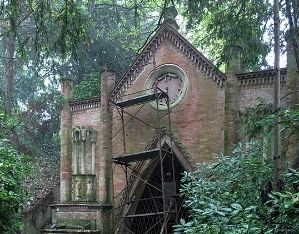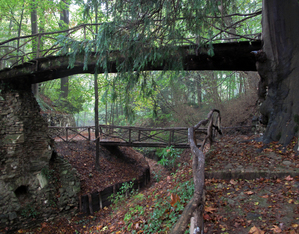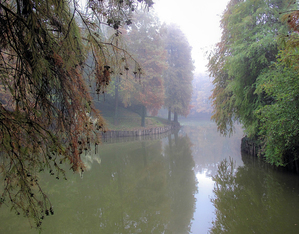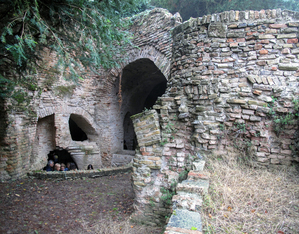This was the first English-style garden to be established in the Veneto region, helping to popularize this approach to landscaping locally. Packed with initiatory references, the present-day garden reflects work undertaken at several different times by Venetian architect Giuseppe Jappelli who, along with his client Antonio Vigodarzere, a member of the enlightened Venetian bourgeoisie, shared progressive, Masonic ideals.
In 1816, Antonio Vigodarzere commissioned Giuseppe Jappelli to transform a significant portion of his estate at Saonara into a landscaped garden. Jappelli came up with the idea of creating a garden capable of transporting the visitor into a fantastical medieval world. He returned on a number of occasions to continue his work, including after Andrea Cittadella inherited the property upon his uncle’s death. The large park is arranged in two distinct areas that offer a series of contrasting views. Entrance is from the south, onto a large elliptical lawn in front of the villa where a sense of brightness prevails. Visitors leave this bright area heading north, via a dark, narrow rocailletunnel that leads to the lake, passing through rugged hills dense with vegetation and short streams crossed via small bridges. From here, the paths become more winding and the vegetation darker, featuring funereal plants such as yews and cypresses, emotionally preparing the visitor for the garden’s Masonic-inspired centrepiece: the Knights Templar cave/chapel. Jappelli conceived this area for initiation rites, creating three rooms that were once full of weapons, statues and tomb slabs. Beyond the mysterious burial ground and the “Sala del Giuramento” room for taking oaths, the final stage of initiation, the baptism of water and fire, took place in a cave before an imposing sculpture of Baphomet, the patron deity of the Templars. Inherited by the Valmarana family, despite modifications, wartime damage and the partial collapse of the cave, the garden remains a living testament to its creator’s genius.





